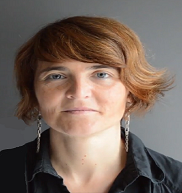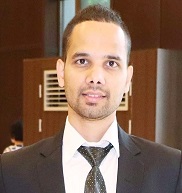Keynote Forum
Mounica Mir
University Barcelona SpainTitle: Sensors and actuators for permeability analysis and tunning in blood brain barrier on a chip
Abstract:
In this work an alternative animal-free in vitro model has been developed for a low cost, easy to work system that simulate the main drug access to the brain, the Blood Brain Barrier (BBB), by means of an Organ-on-a-chip (OoC) platform. The permeability of the BBB is the main issue to deal when a drug needs to cross this barrier. Moreover, in many neurodegenerative diseases (NDDs) the BBB permeability is strongly affected by vascular and inflammatory problems derived from the NDD. These changes on permeability need to be included in the BBB on a chip to correctly mimic an affected BBB by a specific NDD. In the proposed BBB-oC a novel technology combining sensor and actuator was integrated. The sensor permits to characterize in real time the barrier permeability by Transepithelial/transendothelial electrical resistance (TEER). Moreover, the actuators were parallelly patterned on each sides of the barrier to electrically tuning the barrier permeability. A simulation study was performed to assure the feasibility of this technology. The BBB-oC was fabricated and the cells seeded combining a 3D co-culture of human astrocytes and pericytes inside the hydrogel in one channel, to simulate the brain interstitial fluid (ISF) and then endothelial cells in the parallel channel to growth up the vascular barrier generated by these cells. Confocal fluorescence microscope was used in combination with immunostaining to characterize the formed cells barrier and to show the correct development of tight junctions between the adjacent brain endothelial cells.
Biography:
Dr. Mònica Mir received the Degree in Chemistry from University Rovira i Virgili, Spain in 1998. In 2006 she received her PhD in biotechnology in the same University. She realized different predoctoral stages and a postdoctoral position in Max Planck Institute for Polymer Research, Germany. Since 2008, she joins the Institute for Bioengineering of Catalonia (IBEC), Spain as Senior CIBER researcher, combined with her teaching as associate professor in the University of Barcelona. Her main research motivation is related to the improvement of healthcare diagnosis. She is the co-author of 50 publications with an h-index 15 and 1242 citations.
Madhusudan Kulkarni
KLE Technological University IndiaTitle: Microthermofluidic System
Abstract:
Miniaturization of Micro-thermofluidic systems has led to tremendous attention due to their ability to be portable, automated, easy-to-operate, low power, and low-cost microdevices that are amenable to be integrated for various microfluidic-based point-of-care testing applications. The development of a micro-thermofluidic system requires the integration of multiple functions such as controller, heater, sensor, and recorder within a compact platform. Further, a precise, stable, reliable, and easy-to-use thermal management system is essential to deliver rapid data output in real-time for continuous monitoring. The spectrum of applications requiring proper temperature management with appropriate heating techniques is growing rapidly with increasingly important implications for the physical, chemical, and biotechnological sectors. Such temperature control is a critical parameter in managing many physical, chemical, and biological applications. Prominent applications of micro-devices requiring specific temperature control include nucleic acid amplification, nanoparticle synthesis, and digital microfluidics.
However, it has been observed that the existing conventional devices lack advanced technologies, consume more power, have slower processing, and are expensive. Herein, an automated, integrated, miniaturized, easy-to-use, low-cost, portable, and off-the-shelf microcontroller with IoT enabled micro-thermofluidic system has been demonstrated. The device was automated using a microcontroller, and the real-time temperature data logging facility was incorporated using Bluetooth and IoT modules leading to access and store data even in a smartphone for further analysis. The device operated at low power of 9.6 W with a temperature accuracy of ±0.5°C. Further, the proposed device offers opportunities for diversified new concepts to implement in microfluidic temperature-based point-of-care applications.
Ankur Saxena
Manipal University IndiaTitle: Innovation in Microfluidic Pressure Sensing Mechanism for Microfluidic Application
Abstract:
Microfluidic device applications are widely implemented research and development in last few years . MEMS technology have extensively involved in design and application of microfluidics pressure sensor with wide range of healthcare application , biomedical device , 3D chemical sensing[, and PCB based device . The different types of microfluidic sensor are designed to control fluid properties and characterization for drug delivery, DNA blood processing , wearable tactile sensor , and monitoring of finger motion .
The proposed work design and simulation of integrated micro cantilever across a microchannel to analysis the fluid behavior of with respect to movement of microcanitlever. A finite element method analysis fluid structure interaction and calculate the microfluidic pressure for various types of fluid. A mcirocantilever deflection calculate under different fluid flow at constant flow rate. The design of intergrated mcirocantilever across a microchannel is based on material of fluid and geometric dimensions.The result revealed that compare with the finite element method base model that is designed and analyzed prior to simulation. The various fluid are acetone, ethyl achol, and benzene, chloroform, and water flow across a rectangular microchannel where rectangular microcantilever is fixed at the center. The fluid flow rate kept a constant i.e. 4.33 cm/sec , length and height of microchannel are 400um and 150um respectively .
Biography:
Ankur Saxena received the B.E degree in Electronics & Communication Engineering from University of Rajasthan, Jaipur, India in 2008 and Master of Technology degree in VLSI Design from Rajasthan Technical University, Jaipur in 2015. He is currently pursuing the Ph.D. Degree in electronics engineering at Manipal University Jaipur design from Rajasthan Technical University. He worked as Assistant Professor in Jagannath University, Jaipur, India, in 2009-2018. His research interests include Microfluidics Sensor for biomedical application , MEMS Pressure Sensor, RF MEMS switch, low actuation voltage with using of various meanders and perforation
Sudeep Sharma
Kwangwoon University Republic of KoreaTitle: Hydrogen Bond-Triggered Ultrasensitive and Broad Range Pressure Sensor for Wearable Healthcare Monitoring
Abstract:
In this work, a novel approach was presented to enhance the sensitivity and working range of a capacitive pressure sensor by fabricating a hybrid ionic nanofibrous membrane as the sensing layer composed of Ti3C2Tx (MXene) and an ionic salt of lithium sulfonimide in a polyvinyl alcohol elastomer matrix. The results of this study revealed that the functional layer on the MXene surface trapped ions via H-bonds, which considerably decreased its initial capacitance by inhibiting the EDL formation at the electrode/electrolyte interface. The ion pumping process triggered by external stimuli generated a thick EDL at the interface, causing a significant capacitance change and ensuring ultra-high sensitivity of the device. The reversible ion pumping of the hybrid sensing layer lead to ultra-high sensitivities of 5.5 and 1.5 kPa–1 in the pressure ranges of 0–30 and 30–250 kPa, respectively, and a fast response time of 70.4 ms. In addition, the nanofibrous membrane promoted the device operation in a broad pressure range due to its higher degree of compressibility as compared with that of the microstructured film. Thus, the developed sensor exhibited much superior performance as compared with the majority of the recently reported capacitive pressure sensors with the EDL-based sensing mechanism. Its performance characteristics were also validated under various pressures (from ultralow to large deformations), and possible applications of this sensor in physiological signal monitoring and artificial e-skin are verified.
Biography:
Sudeep Sharma received my B.E. degree in Electronics and Communication Engineering from Western Region Campus, Tribhuvan University, Nepal. Currently, He is a PhD student under supervision of Dr. Jae Yeong Park in the Department of Electronic Engineering at Kwangwoon University, Seoul, South Korea. He is doing research in material science and engineering. His main research interests include flexible and wearable electronics.
Puneeth S B
Presidency University IndiaTitle: Development of Electro-Microfluidic Viscometer for BioChemical Applications
Abstract:
A completely automated and integrated Microviscometer is developed on two different platforms, one was on 3D printed microfluidic devices and the other on chromatograph paper-based devices, and its potential to measure relative viscosity is demonstrated. Viscosity is calculated in microfluidic devices fabricated on both the platforms by measuring the time taken by the test fluid to cover the pre-determined length. To measure relative viscosity, reference fluid is necessary, and in both the platforms, water was used as reference fluid. The timing values of normal tap water is used to calibrate the microcontroller associated with the device in order to automate the device.
The 3D printed Electro-Microfluidic Viscometer (EMV) mimics the conventional Ostwald viscometer. The EMV measures the reference fluid viscosity, under laminar flow, by automatically evaluating the travel time of the sample fluid vis-à-vis to that of a reference fluid. The EMV, consisting of a microchannel and four equidistance electrodes, was fabricated using a simple desktop fused deposition modeling 3D printer in a single step. The complete platform, comprised of the microfluidic device, onboard display unit, pumping subsystem, data acquisition subsystem, button systems- and signal processing subsystems, has been integrated and automated to determine the viscosity. Here, the device was exhibited to measure the viscosity of fluids such as Raw Milk, Skimmed Milk and Acetic Acid. Similar device was developed for single time usage by employinhg chromatograph papers.
Biography:
Puneeth S B has completed his PhD from BITS Pilani, Master’s and Bacherlor’s are from Visvesvaraya Technological University. He is currently working as Assistant Professor in Department of ECE, Presidency University, Bengaluru. He has published more than 10 papers in reputed journals and has been serving as a peer-reviewer for reputed journals.
Gangaraju Gedda
Vishnu Institute of Technology IndiaTitle: Metal/Carbon dot nanocomposite assisted SERS biosensor: trends and perspectives
Abstract:
The sensing of bio-molecules based on analytical tools has become one of the rapidly developing scientific fields. Surface-enhanced Raman scattering (SERS) is a highly sensitive method not only for the sensing of lower concentration and volume clinical samples including DNA, drug, RNA, peptides proteins etc in blood, serim and plasma but also sensing of pathogens; single-cell identification and sensing; bioimaging of small molecules; and diagnosis of disease. It also provides significant structural data for biological analytes. One fastest growing field of SERS biosensor design is the use of carbon-based metal nanocomposites as substrate materials, such as metal/carbon dots, metal/single walled nanotubes, metal/graphene sheets, and metal/graphene oxide. In this presentation, we describe the recent trends and perspectives in SERS biosensors. Specifically, metal/carbon dots based SERS biosensors: focusing on fundamental principles for metal/carbon dots based materials for SERS biosensor design, fabrication, and operation, and provide insights into their rapidly growing future potential in the fields of bioanalytical and biomedical , in situ analysis and quantitative analysis. As such, this presentation can play the critical role of a roadmap to direct scientists and researchers toward concepts that can be used in the design and development of next generation SERS biosensors.
Biography:
Dr.Gangaraju Gedda has completed his Ph.D. at the age of 30 years from National Sun Yat seen University and followed by postdoctoral fellowship from National Taiwan University of Science and Technology. He is working as the Associate Professor of Chemistry at Vishnu Institute of Technology, India. He has published more than 25 papers in reputed journals and 2 book chapters with 15 h intexing and 715 citations. He also has been serving as an comitte member of internation conferances and reviwer for various international journals. His Current research work is focusing on development of green nanotechnology for biosensing, dignosis and therapetic applications.
Ayari Mariem
Higher Institute of Medical Technologies of Tunis TunisiaTitle: Design and production of an amperometric biosensor Multi-parameters
Abstract:
In general terms, a biosensor is considered to be a detection device that combines several technologies such as molecular biology, microelectronics, automation and computer science. It combines a biological element (antibody, enzyme, lipids, plant or animal cell, DNA fragment, etc.) with a physical transducer (optical fiber, electrode, piezoelectric quartz, etc.). This association allows the study of substances likely to interact with the biological element.
Biological sensors have undergone considerable development due to their simplicity, reliability, speed and selectivity. They have constituted the most attractive alternatives for classical analytical methods in various fields such as food processing, medicine and clinical biology, or environmental quality control. In this work we are interested in the design and production of a multi-parameter electrochemical amperometric biosensor. This device makes it possible to measure the variation of the current following a chemical reaction. The induction of a redox reaction and the displacement of electrons generates an electric current which corresponds to a concentration.







